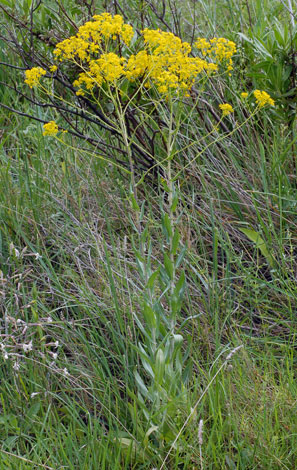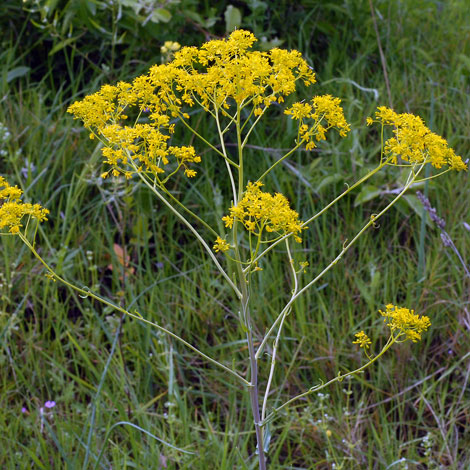Isatis tinctoria Woad


Along the lowland roads near the sea at the foot of Monte Gargano, this plant was a distinctive weed of many verges. The large heads of yellow flowers were interspersed with another distinctive tall roadside plant: Ferula communis (Giant Fennel). The stem leaves are entire and clasp the stem. I. tinctoria is now very rare in the wild in the British Isles.
The species name tinctoria indicates that the plant has been extensively used in the past as a dyestuff. These days it is still used by people who like to dye their own wool. The leaves and stems are crushed and treated with hot water and rapidly cooled. The mixture after filtration is made alkaline at no greater than 50 Celsius, with sodium carbonate solution. Oxidation, by whisking or somehow bubbling air through the remaining filtrate, eventually yields a precipitate of the blue dye indigo: (2,2’-Bis(2,3-dihydro-3- oxoindolyliden)). A good sized Woad plant can yield as much as 700 g of indigo.
You can then use it to dye your jeans a bluer shade of blue but personally I just buy a new pair from Tesco for £5 (tut, tut).
Roadside verge not far from Monte Sacro, Gargano, 22nd April 2009
Added on February 1st 2010, updated 13th April 2010, updated 28th May 2013




